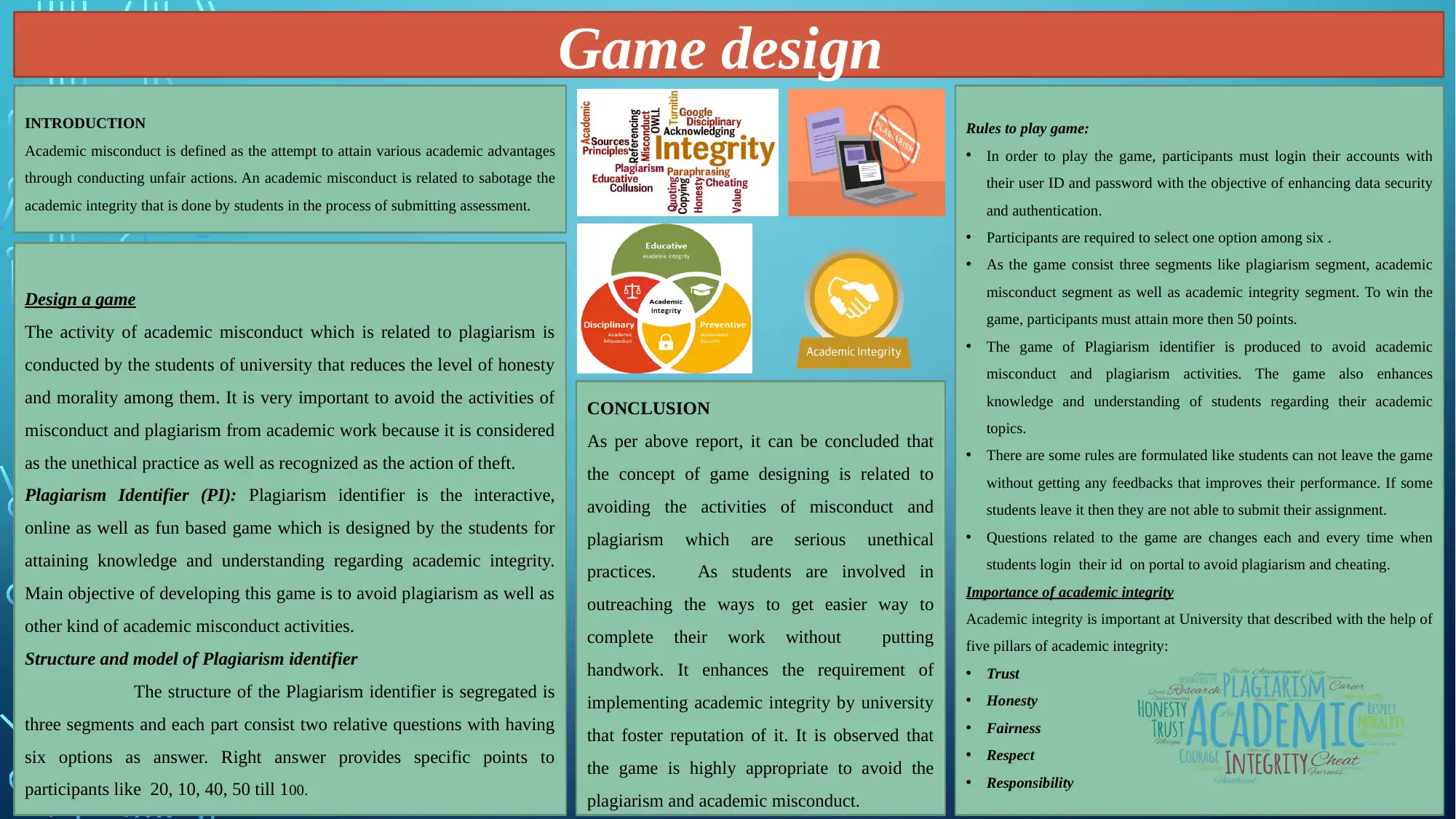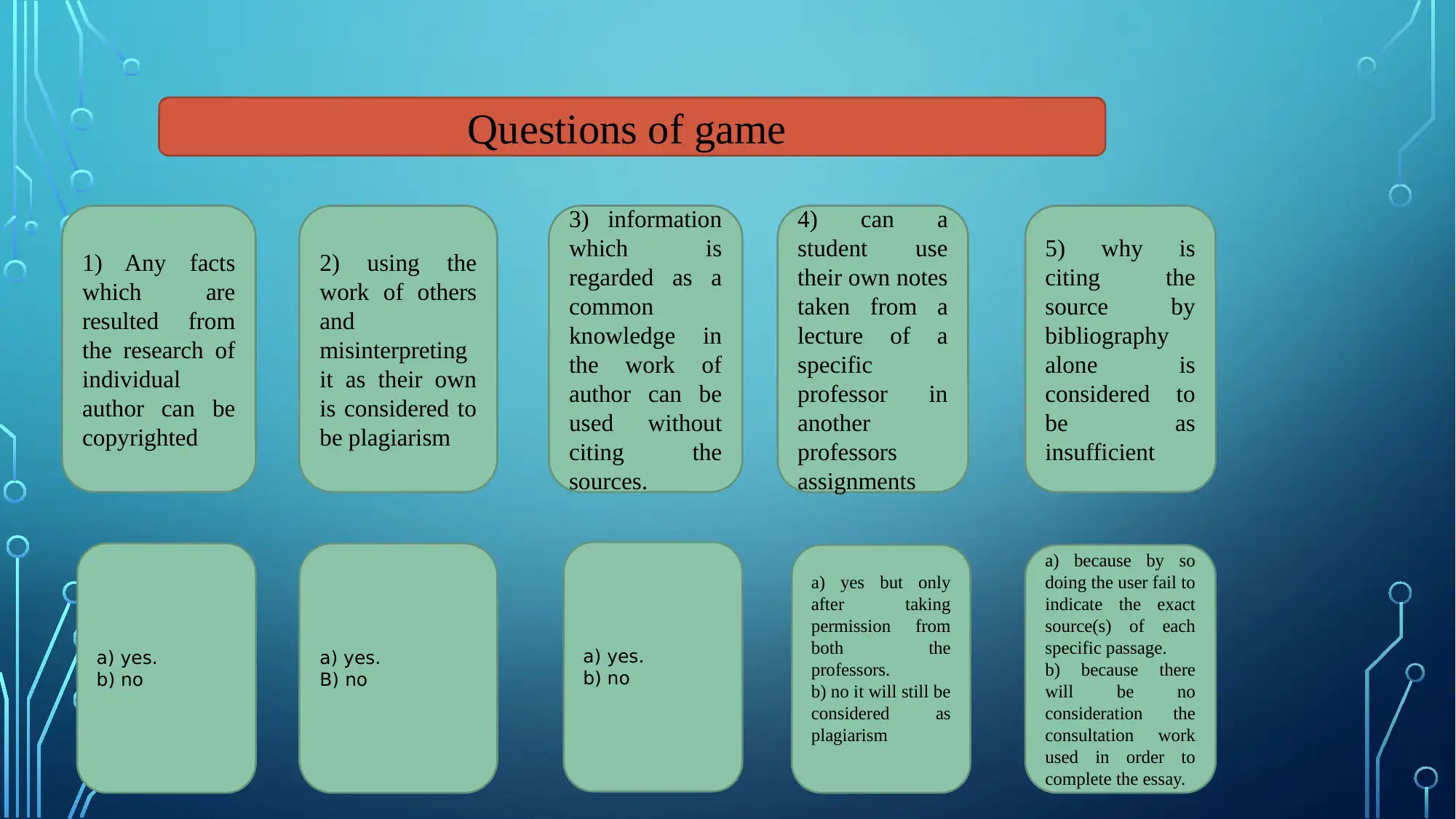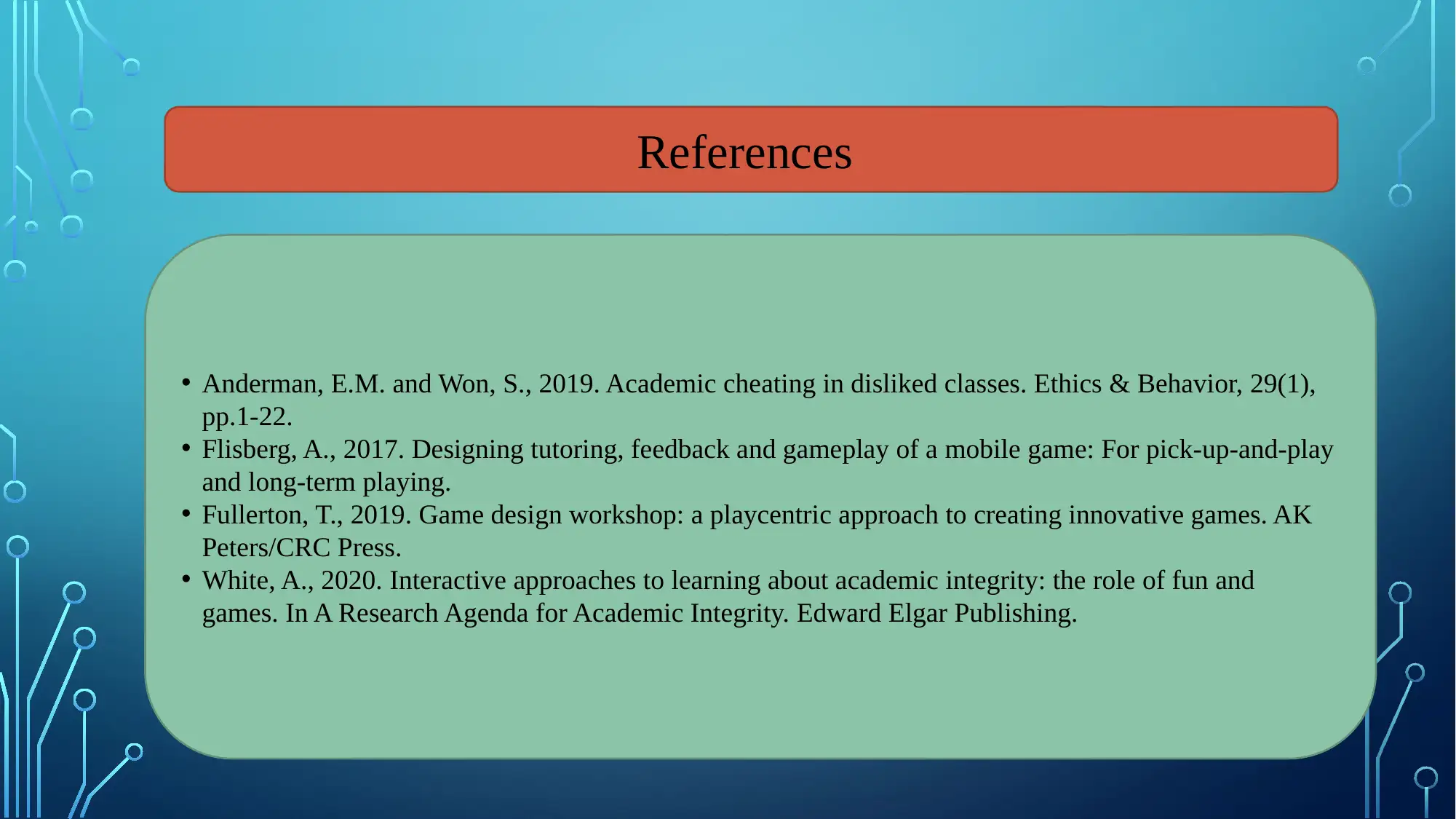Plagiarism Identifier Game Design: Promoting Academic Integrity
VerifiedAdded on 2023/06/18
|3
|791
|100
Project
AI Summary
This project outlines the design and purpose of a game called 'Plagiarism Identifier' aimed at preventing academic misconduct, specifically plagiarism, among university students. The game is structured into three segments: plagiarism, academic misconduct, and academic integrity, with participants earning points based on their answers to related questions. The goal is to educate students on the importance of academic integrity, including trust, honesty, fairness, respect, and responsibility. The game incorporates rules to ensure engagement and prevent cheating, such as requiring completion for assignment submission and randomizing questions. The project concludes that game design is an effective tool for addressing unethical practices like plagiarism and promoting a culture of academic honesty. The game's questions cover various aspects of plagiarism, copyright, and proper citation methods, referencing academic sources to support its design.
1 out of 3









![[object Object]](/_next/static/media/star-bottom.7253800d.svg)